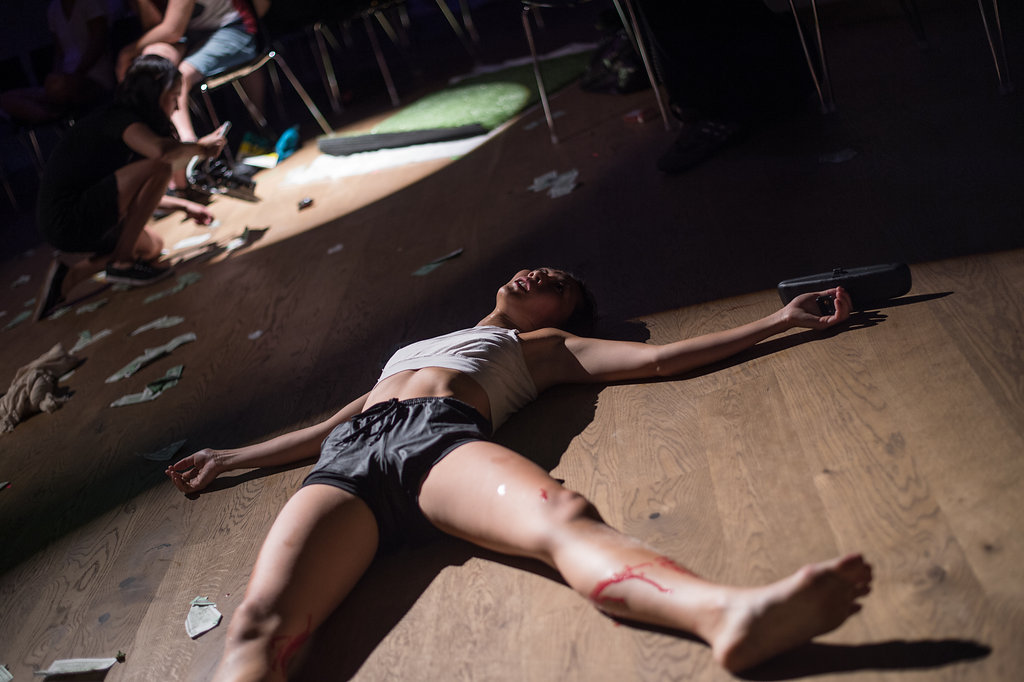Peter Brook famously defined theatre by writing that “a man walks across this empty space whilst someone else is watching him, and this is all that is needed for an act of theatre to be engaged”, but what if they were running instead? Ming Hon’s Chase Scenes, which she performs in alongside Hilary Anne Crist and Alexandra Elliott, consists of over 60 self-contained scenes of running, chasing, and being chased, and all the terror and excitement that goes with it.
There is never an illusion of narrative or sequence. The stage is lined with props and set pieces – a gun, multiple hats, a box of feathers – all sparking curiosity about what is coming next. The cast take it in turns to play the chasee, the others filming on iPhones, which are projected onto screens for the audience to see. Being a Fringe show, and trying to recreate scenes involving house fires, mountain climbing, and car chases, means that they incorporate some innovative ideas with the space and material they have. There is a humbleness that was distinctly lacking in Katie Mitchell’s divisive La Maladie de la Mort at the International Festival earlier this month, and the show is infinitely more involving for it. Take the car chase entitled “Rear View”, in which Hon sits next to a member of the audience, pretending to kidnap her. Using a rear view mirror, some swirling camera angles, and a couple of toy cars, they achieve a clever and hilarious homage to the clichéd but adored cinematic staple.
There is a break from proceedings in the form of a compilation of images of the most iconic stars linked to the trope (Tom Cruise, Arnold Schwarzenegger, and Daniel Craig to name a few, all of whom were male, although whether this was relevant was left to interpretation). It made a practical interlude from the constant running, but was not entertaining in itself, and more something to watch whilst we waited for the action to resume. Even so, Chase Scenes allows audiences to appreciate the tropes of action and thriller films whilst also laughing at them. Hon makes the most of the space of the theatre, the live audience, and the possibilities of live filming to make a highly creative, high-octane piece of multimedia theatre.
